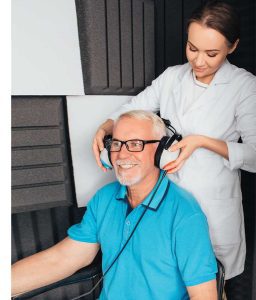It’s More Than Just an Occasional Shaky Hand
Tremor can occur in any part of the body and becomes a problem when it interferes with daily activities. Sometimes it can be a symptom of underlying neurological disorders.
What Is Tremor?
Tremor is an unintentional, recurring muscle contraction that causes shaking movements in one or more parts of the body. Tremor can happen all the time or only sometimes. It can occur during movement, such as writing or reaching for something (action tremor), or while someone is relaxed and sitting or lying down (rest tremor).
It’s important to know that not all tremors are abnormal. Everyone has a tiny bit of shaking in their body, called “physiologic tremor.” This tiny, barely noticeable shakiness is a result of normal processes in the body such as heartbeat and muscle activity. This type of tremor is usually so small that you can’t see it, and it doesn’t get in the way of everyday activities.
However, when shaking becomes more noticeable or makes daily tasks difficult, it might be an abnormal tremor.
What Causes Tremor?
Abnormal tremor is a type of movement disorder that occurs when there’s a disruption in parts of the brain that control movement. Tremor can be a primary condition, meaning it is a medical problem on its own, or a symptom of another condition like Parkinson’s disease, stroke, or multiple sclerosis. It can also be a reaction to something external, such as certain medicines or substances.
Sometimes tremor runs in families, which suggests that genetics could play a role. However, the exact cause is often unknown.
What Are the Symptoms?
Tremor can look like:
- Shaking or trembling (especially in the hands, but it can also be in the arms, head, legs, or trunk)
- A shaky or quivering voice
- Difficulty with fine motor tasks (such as writing, drawing, or using utensils)
These symptoms may worsen with stress, tiredness, strong emotions, or caffeine consumption. Certain tremors can be triggered by specific postures or tasks.
What Are the Different Kinds of Tremor?
Tremors are categorized by when they happen and what triggers them.
- Physiologic tremor. The normal, tiny amount of tremor that’s present in all healthy individuals.
- Enhanced physiologic tremor. A more noticeable version of physiologic tremor. This small, fine tremor in the hands and fingers is usually a side effect of certain medications, alcohol withdrawal, stress, fatigue, or some medical conditions.
- Essential tremor. The most common type of abnormal tremor. It happens without other neurological symptoms. It occurs during movement and usually affects the hands and arms, but it can also impact the head, legs, or voice. This type often runs in families.
- Parkinsonian tremor. A common early sign of Parkinson’s disease (though not everyone with the condition experiences tremor). It is most noticeable when the body is at rest and may look like rolling a pill between the thumb and a finger. This type usually happens in only one limb or on one side of the body at first, but it can eventually show up on both sides.
- Dystonic tremor. A tremor that occurs in people with dystonia, a condition that makes muscles contract involuntarily. It can affect the neck, vocal cords, or limbs.
- Cerebellar tremor. A slow, large tremor that gets worse after purposeful movement (like pressing a button). It’s caused by damage to the cerebellum, the part of the brain that controls movement. This damage could be caused by a stroke, tumor, injury, or alcohol use disorder.
How Is Tremor Diagnosed?
If you’re experiencing tremor, it’s important to speak with a healthcare provider. They will likely:
- Ask about your medical history and your symptoms
- Perform a physical exam
- Conduct a neurological exam
They may also order bloodwork or brain imaging to identify for any underlying causes.
What’s the Treatment?
Most tremors can’t be cured, but they can be managed. Treatment depends on the type of tremor and its severity. If tremor is caused by a different health condition, treating that condition can reduce or stop the tremor. Mild cases may not need treatment, especially if you aren’t bothered by the symptoms.
- Medication. Certain medications can help slow or suppress symptoms. Botulinum toxin injections can also help certain kinds of tremor.
- Surgery. For severe cases of tremor and when medicines aren’t helping, a doctor may recommend surgical treatment such as deep brain stimulation.
- Therapy. Physical, speech, and occupational therapy can all help control symptoms of tremor and manage daily tasks.
- Assistive devices. Certain assistive tools and technologies can help simplify daily tasks such as eating, writing, or using a computer. Some wearable devices can also help suppress tremor.
Living With Tremor
Making certain lifestyle changes can help manage mild to moderate tremor.
- Choose easy-to-wear clothes and shoes, such as those with Velcro or slip-ons.
- Reduce or eliminate caffeine and other stimulants.
- Talk with your doctor about trying medications to suppress your tremors or stopping medications that might worsen them.
- If your doctor prescribes medications to help your tremors, take them on time.
- Reduce stress and get enough sleep.
Remember, if you’re concerned about tremor, talk to your healthcare provider. They can help you find the best ways to manage your symptoms and improve your quality of life.
Sources: National Institute of Neurological Disorders and Stroke, MedlinePlus
Image credit: Getty Images










